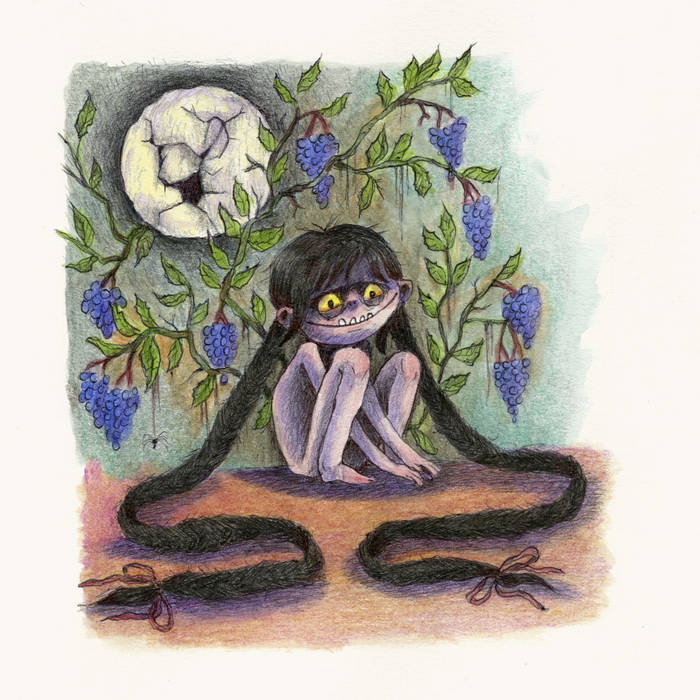“Problemista”
When Alejandro (Julio Torres) makes a mistake on an important client at the cryogenic freezing facility he works at, he is fired and has to quickly find another job before his work visa expires. Desperate to stay in the United States and become a toy designer, Alejandro meets the client’s eccentric art critic wife Elizabeth (Tilda Swinton) and they work together to curate a posthumous collection of her husband’s life work — a series of paintings of eggs that must be tracked down across New York.
“Problemista” is a surreal comedy tied together by a strong duo of performances by Torres and Swinton. Alejandro has a dry comedy and willingness to do any task thrown at him, all in search of a job at Hasbro where he can invent dolls with fingers behind their backs and smartphones to reflect the digital age. He is appearingly melancholy, but this is because he has left his mother and imagination behind in El Salvador so he can navigate through the impossible limitations of acquiring a work visa.
Torres is the lead actor, director, and writer of this film. As a result, Alejandro’s struggles feel personal and real. He must find a sponsor, but he can not accept payment for his work, but he still has to make a living to pay his bills. This all must happen within the short timeline of ninety days. In one scene, Alejandro climbs through an endless ladder of offices and an undefined narrator describes the rules of this game.
“The maze is impossible to navigate,” she says.
Elizabeth, on the other hand, is rude, erratic, and untethered from the world of reality. She moves through ideas, instructing Alejandro to execute them when she does not know how. If he does not know how, she is angry. When someone disagrees with Elizabeth in a hushed voice, she demands they stop yelling at her. This is a difficult role to find balance within because of its potential unpleasantness, but Swinton pulls off a loud performance with incredible humor and physical presence. Her bright pink wig and colorful clothing demand the eye. Eventually, Alejandro and Elizabeth form a bond of opposition and help temper the extremes of each other.
“Problemista” is a story of opposites: loudness and quiet, impossibility and reality, established and new. This is an unconventional film filled with strange characters and over-the-top circumstances, but if you crack open this egg and look deeper at what is inside, it has hidden layers of emotional heft. “Problemista” establishes real-life problems and quells them within the land of imagination. In the end, this story shows we all have the ability to chase after our most far-fetched dreams. Even if obstacles of time and space stand in our way, we all continue to find our way in this difficult, impossible world, and that is beautiful.
-Kaley Chun, Senior staff writer
“Water for Life”
The San Diego Latino Film Festival had over 100 films shown throughout the festival, from Mission Valley to Park & Market. Luckily, UC San Diego had the privilege to screen one of the films on campus. SDLFF partnered with COMM 140 to bring SDLFF to UCSD to get more students involved with the program. Together they screened “Water for Life,” a documentary following three political activists fighting for water rights in Chile, Honduras, and El Salvador, respectively.
The documentary tackles patterns of exploitation and impunity in these Latin American countries. We are introduced to each leader in their respective country and are brought into their struggles for clean, free, and non-privatized water in their communities. Interviews with activists, community members, and even political figures tell the story, along with imagery to convey their message.
Director Will Parrinello was exposed to all of these stories when he was hired to make short documentaries about each leader after they had received the Goldman Environmental Prize. Through this, he gained their trust and was able to tell their story. Parrinello worked closely with the communities, allowing him to pay tribute to them instead of exploiting them. This is very evident in the film; the trust they have with each other can be felt, especially when tragedy strikes. Even when the unthinkable happened — the assassination of one of the leaders — their resilience to push forward and keep fighting was empowering. Their passion was felt through the screen and touched many of those who watched it, as was expressed afterwards during the Q&A.
It took 12 years for Parrinello and his team to finish the documentary, and although they faced hardships and emotional challenges in finishing it, “Water for Life” is a great and important film that everyone should see.
-Kamiah Johnson, A&E Co-editor
“Tumbadores”
What kind of space can a woman occupy in the drug business? Popular media usually portrays women in this industry as secretaries, drug mules, and wives who stand by their kingpin husbands’ sides. However, director Maria Isabel Burnes offers a story we aren’t used to seeing, a woman taking control of her own story in the drug world, in her first feature film “Tumbadores.”
In Columbia, we follow Manuela (Mary Gaby Sealy) who works with her father Don Ceaser (Fernando Solórzano) in an Arab drug cartel. She’s been promised to take over the business in the event her father cannot, but when her father is arrested and the Arabs take over the business instead, Manuela will do whatever it takes to take back what’s hers.
Burnes paints a colorful portrait of the seedy criminal underworld Manuela lives in. The world these characters live in is rich, detailed, and very much lived-in. The soundtrack utilizes a lot of reggaeton music to convey this, setting the mood and atmosphere when moving from clubs to shady abandoned warehouses.
As the cinematography and music evolve throughout the film, so does Manuela’s character. Sealy’s performance sells Manuela’s transformation. Sealy adds a silent resilience to Manuela that makes her compelling to watch. Even when she does the wrong thing, you can’t help but root for her. The scenes that Sealy and Solórzano share are electric, and they bounce off of each other well. In an emotional scene when Caesar tells her, “There’s no place for women in this business,” Manuela is heartbroken; this is when she starts to take control of her narrative. Unlike other feminist empowering films, the writers don’t take away other aspects of her life to uplift her social status, like her love life. While her relationship with Nico (Tachi), another drug dealer, isn’t that essential to the story, it shows she doesn’t have to sacrifice everything to get ahead.
Being a woman striving for success in a male-dominated industry is something many women can relate to. Having this common struggle depicted in a drug cartel is an interesting and fun way to talk about these struggles we often face, whether it’s in an office or at a shoot-out.
-Kamiah Johnson, A&E Co-editor
“Black Rio! Black Power!”
R&B artist Jill Scott once said soul music is “about longevity and reaching and touching people in on a human level — and that’s never going to get lost.” Soul music defined a generation in the 1970s and continues to leave its mark on culture today. While the groovy beats and smooth vocals rhythmically moved people in the 70s, the music also aided in the political movement for Black people. However, soul music was not only impacting Black people in the United States, but also in Rio.
Emilo Domingos’ documentary “Black Rio! Black Power!” takes us into Rio de Janeiro’s soul music scene in the 70s and how it affected the Black community’s identity, as well as their political and racial power. Domingos presents this vibrant period of time through Dom Filo’s history. Filo was one of the movement’s leaders, and highlights these moments in time with interviews with people who were present or a part of the movement. This revolution didn’t start off with the political movement; instead it started with the need to create a space for Black people to feel safe in. At the time, Rio was facing segregation problems, and Black youth had no place to go. Soul music dominated the scene from 1972-75 and was the only positive depiction of themselves they had. So, they started to have dances, catered to the Black community, that only played soul music. These quickly took off, and Black Rio started a culture of their own.
Over time, these fun dances turned into something more: a want and need to create a space for Black youth to feel safe turned into the start of a movement. They started to feel more confident in themselves; no longer hesitant to style their clothes or wear their afros in public, despite what others thought. They took major inspiration from the Black power movement in the U.S and the anti-colonial movement in Africa, and started pushing for equal rights in Rio.
“Black Rio! Black Power!” is the story of how a genre of music not only radicalized an entire generation, but also prompted them to take matters into their own hands to create spaces for them to have fun. B-roll footage and photos pepper the documentary, giving us a full view of how they liked to party. Interviewees spoke fondly of those times, recounting memories of dances, favorite artists and chasing after men and women to slow dance to. It was a rich period of time in Rio, and Domingos brought that culture to the forefront for everyone to see.
-Kamiah Johnson, A&E Co-editor
“La Guardia Blanca”
A farmer wearing a white hat looks forward toward a desert in Mexico. Later, he will talk about his hometown of Providencia, which is gone now. “That has left a mark on my soul,” he says. Slowly, this hat fades out of view. The desert is replaced by a bird’s-eye-view of a green rainforest thick with tall trees. The camera pans in closer through the greenery, its zoom a slow push inward.
Here in the midst of nature, peeking over the tops of the lush trees, is an oil drill. At first this drill is barely visible so far in the distance, but it slowly moves closer until it dominates the screen. Its arm moves up, then down, and up again in a never-ending cycle of inevitability and destruction.
“La Guardia Blanca”, directed by Canadian filmmaker Julien Elie, is a documentary about the relationship between organized crime, the Mexican government, and large corporations in stripping Mexico of its natural resources. Half the film shows this issue through stunning landscape wide shots with the picturesque stillness of photographs. Pungent silences settle in as De La Rosa sits in his house, cleft only by the far-off sounds of sheep and chickens.
The other half of the film is composed of emotional, raw testimonials. These firsthand accounts tell the stories of towns threatened by “New Colonialism” and the people who were silenced after speaking up against organized crime. The survivors try to make change and speak up as well, but powerful forces are working to poach the resources they depend on.
In an interview with POV Magazine, Elie says, “When I discuss safety with potential subjects, they often say ‘we are already dead. Your film won’t make it worse… it might help.’” “La Guardia Blanca” provides a telescopic view into a matter that threatens to crush everyone in its path. The Mexican landscape is at risk, and the locals look to be heard. In this eye-opening documentary, the people speak out as they defend the resources that remain and the communities that are left.
-Kaley Chun, Senior staff writer
Image courtesy of the San Diego Latino Film Festival








